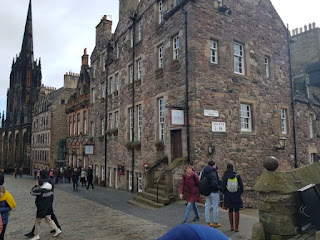Dept of Geodetic Science OSU pada satu masa merupakan institusi terkenal merata dunia kerana fokus mereka dalam bidang geodesi dan geodetic science. Kini isntitusi tersebut semakin mengecil peranannya. Kebimbangan tentang perubahan fokus mereka dalam geodesi menjadi satu igauan kepada sesetengah pihak geodetik di Amerika.
Baca satu artikel mengenai hal tersebut yang disuarakan oleh David Zilkoski. Beliau adalah alumni GS OSU (source gps world - link):
I attended The Ohio State University (OSU) to obtain my
graduate degree in Geodetic Science in 1979. Therefore, I will admit that I am
a little biased — once a geodesist, always a geodesist. The basic definition of
geodesy is the applied science for determining the size and shape of the Earth,
designing and realizing reference frames, and determining where you (and
anything else) is on the Earth.
In OSU’s geodesy heyday (1960–1990s), many Americans trained
were sent by federal agencies: National Geospatial-Intelligence Agency (NGA), NOAA/National
Geodetic Survey (NGS), USGS, Army, Navy and Air Force. During the 1970s, NGS
was sending two employees back to school every year. These agencies needed
geodesists because they were undertaking major projects such as NGS’ to
readjust the U.S. national horizontal (NAD83) and vertical geodetic (NAVD88)
networks. I was one of the employees that NGS sent to OSU to be trained to
support the NAD83 and NAVD88.
The advancements in satellites and computers have enabled
geodesy to expand into many different disciplines. Geodetic science and
technology now underpin many sciences, large areas of engineering (such as
driverless vehicles and drones), navigation, precision agriculture, smart cities
and location-based services. Geodesy is actually more important than ever.
Today, the environment is different. U.S. federal agencies
still need geodesists for developing enhanced and refined geodetic models and
tools. However, major U.S. companies, such as Google and FedEx, as well as the
automobile industry, precision farming companies and mining companies also need
more accurate geodetic models, tools and algorithms. Therefore, these companies
also need trained geodesists to perform important research on topics that
address their specific geodetic requirements.
Today, OSU’s Geodesy Department is training very few
American citizens. As the U.S. moves toward achieving geodetic-grade
positioning in real-time in support of new applications such as driverless
vehicles and drones, the number of trained geodesists should be increasing, not
decreasing [Note: In 1990, there were 92 geodetic science graduate students. In
2019, there were 25; only three were U.S. citizens]. OSU and other universities
need to educate and train the next generation of the nation’s scientific
workforce of highly skilled research geodetic scientists that will expand
industry’s research expertise.
The shortage of American geodesists poses a significant
economic risk for the U.S. Europe and China train many more geodesists than the
US. There are very few geodetic science programs in the U.S. today, and
education in geodetic proficiencies has been fragmented. The OSU graduate program
is one of few surviving geodetic science programs. Users of geodetic products
and services need to support geodetic departments in universities so that U.S.
geodesy programs can grow to meet the geospatial demands of the future. The
geospatial component of the economy is worth about $500 billion/year. So why
are we allowing its foundational discipline to shrink in this country?
OSU Colombus (link)
- - - - -

















































